How To: Single-Arm Bent Over Row
3 Golden Rules (Made Better!)
Today we’re going to cover the three golden rules for the single-arm bent over row. This exercise is great for building an overall thick and muscular back, and because you can support yourself with your non-working hand, you’re greatly reducing the overall stress on your core and lower back. This will allow you to have more energy to pull more weight for more reps. Any time you can push your limits to lift heavier, that means you’re in a better position to overload your muscles for more growth.
Golden Rule #1: Pull Toward The Hips!
Depending on what area of the back you want to work on, there are many different variations of this exercise. More often than not, the majority of us are trying to utilize it for lat thickness and width, but are not pulling the dumbbell through the right movement pattern in order to do so. To maximize engagement for thickness and width, you need to pull the dumbbell as close to your torso as possible, and always toward the hip.
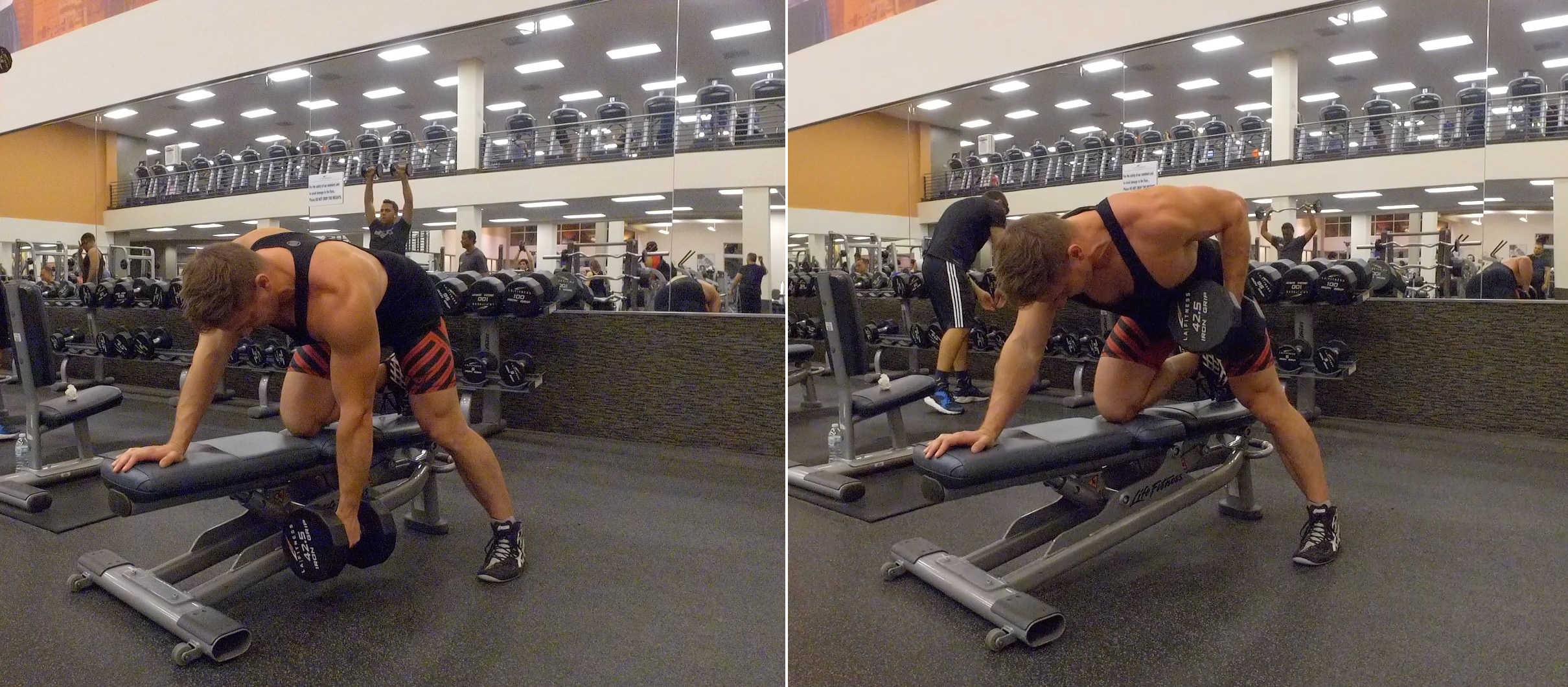
The problem is that most people approach this exercise by simply bending over, and pulling straight up, which typically results in pulling the dumbbell toward the upper abs. Although your lats will still engage, more emphasis will be placed on the mid back, or your rhomboids and lower traps. You also have the option of pulling the dumbbell more towards your chest. If you do this, you’ll be mainly working your rear delts and upper and mid traps, which, in my opinion, there are other exercise better suited for targeting those muscles.
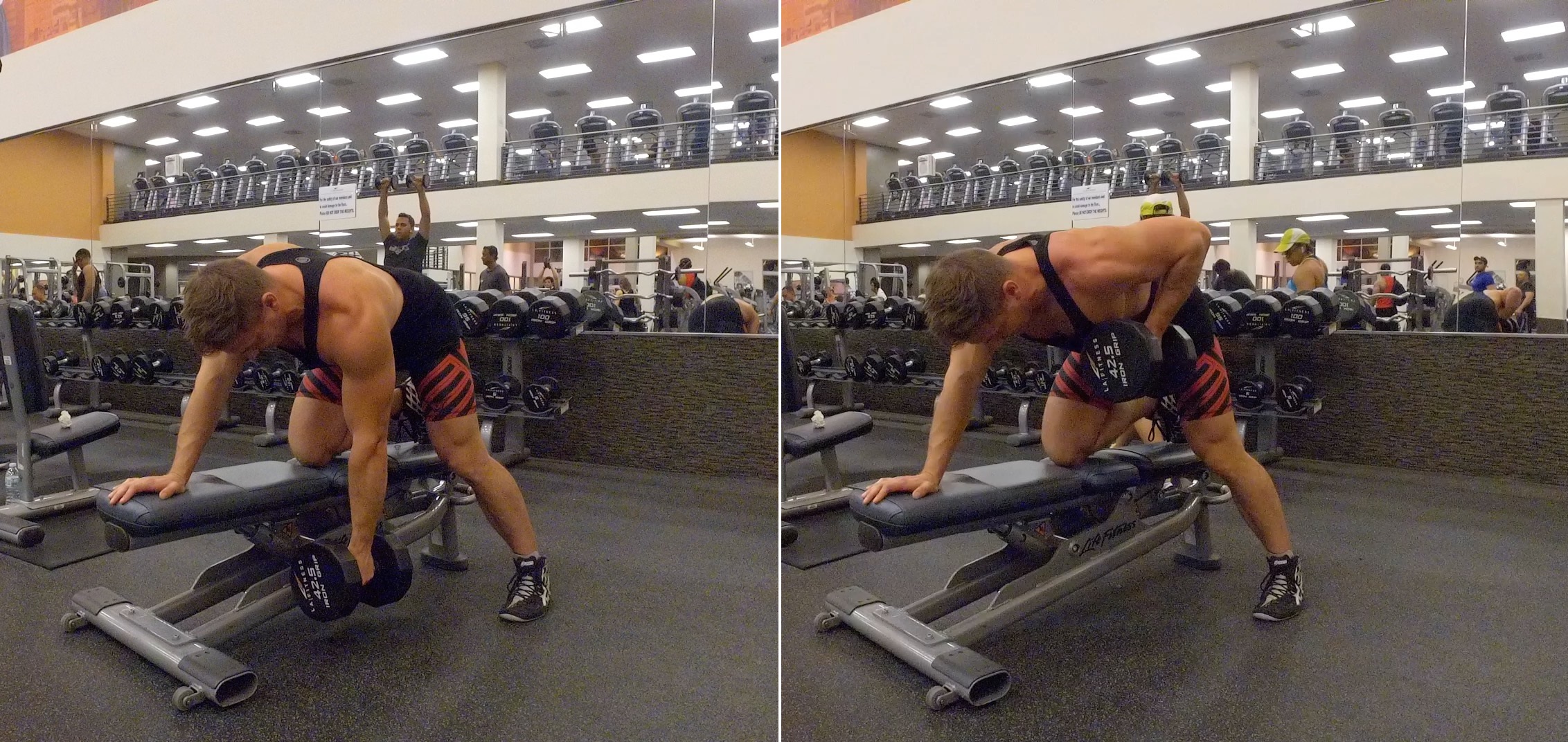
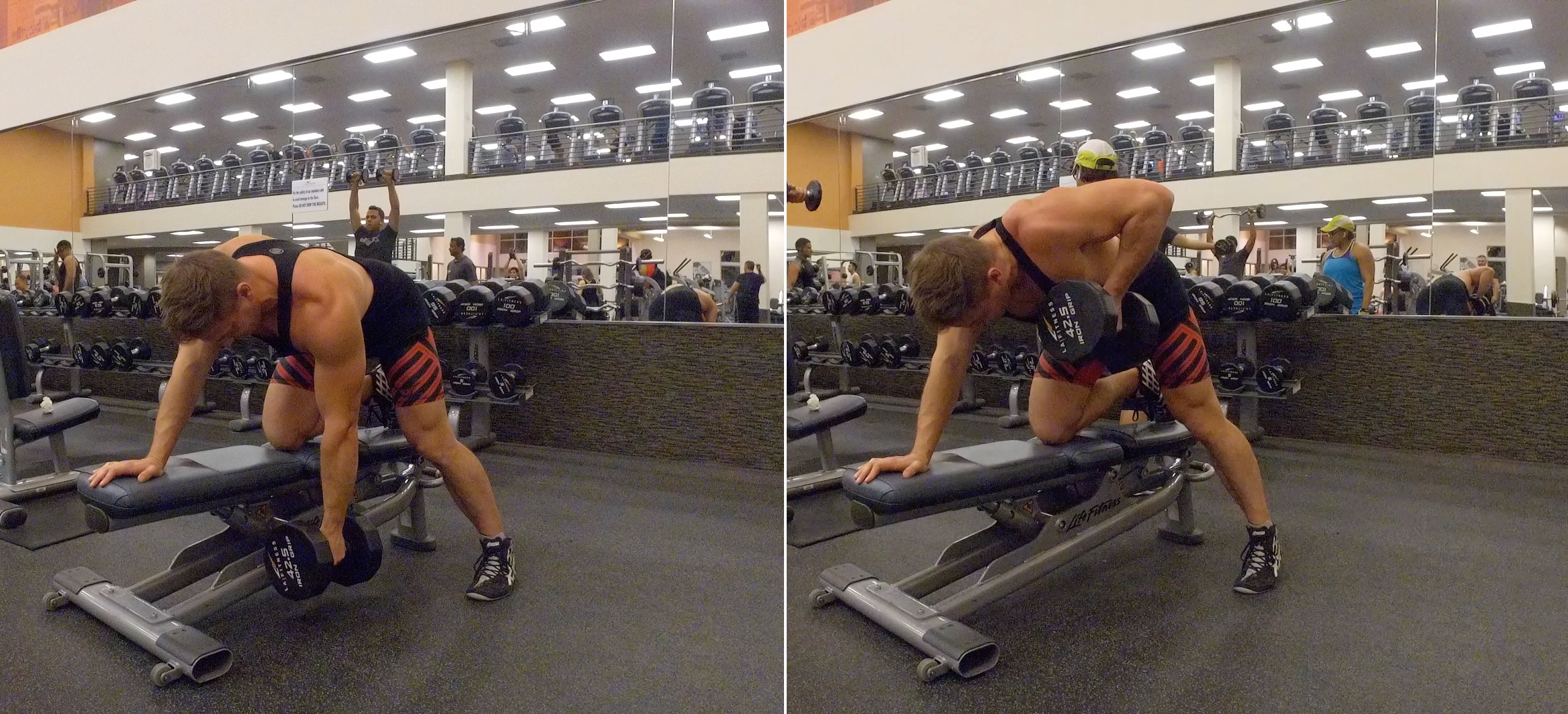
Golden Rule #2: Focus On Full Range Of Motion!
Remember, you break down the most muscle for growth during the negative and in the heavy stretch, which for this exercise is at the bottom of the movement. If anything, you should actually try to pause for a second or two, to really feel that weighted stretch before going into the next repetition. As for the flex at the top of the movement, this can only be maximized if you maintain the proper position of your torso, without bending or twisting during the movement.
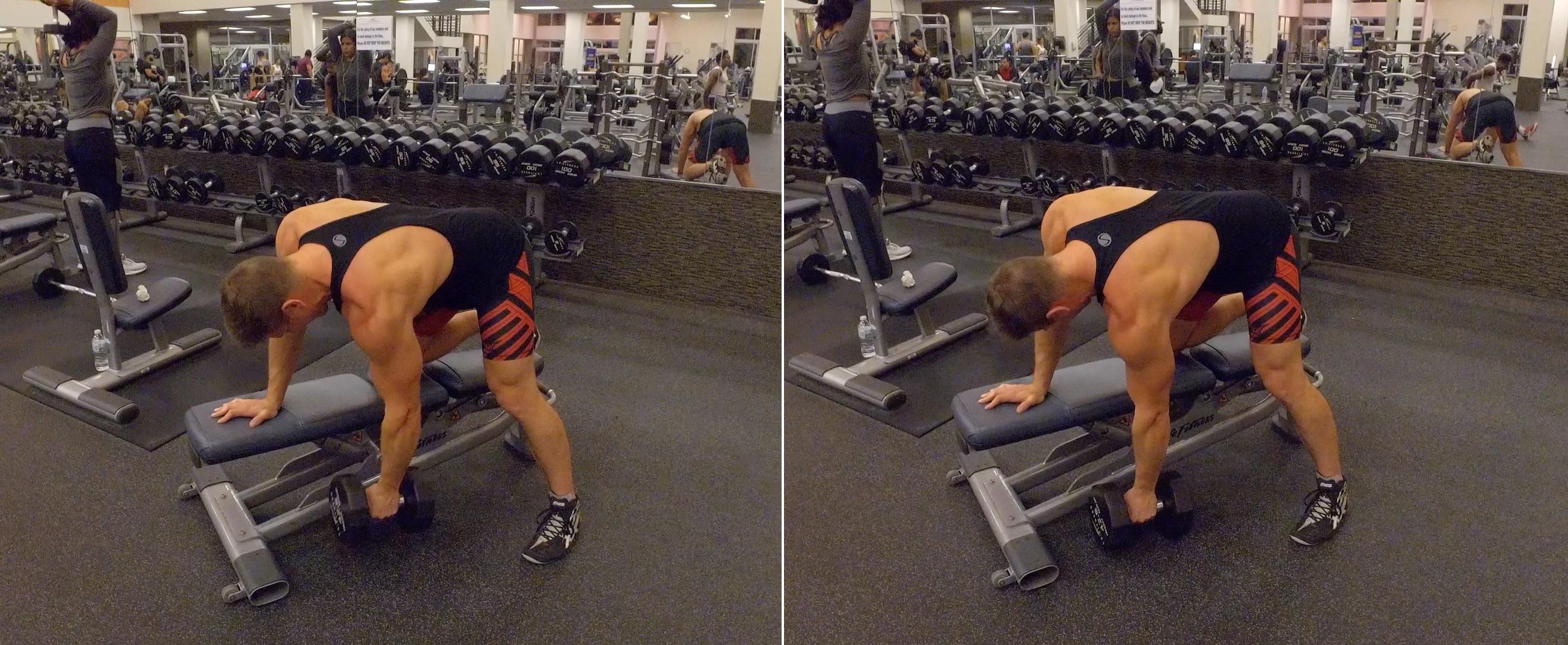
Unfortunately, most people increase their weight too fast with this exercise, and go from proper form at the top of the movement, to basically completely twisting their upper body to help lift the weight. This greatly reduces the intensity of the flex at the top of the movement, and if this is you, you need to lower the weight, and fix your form.
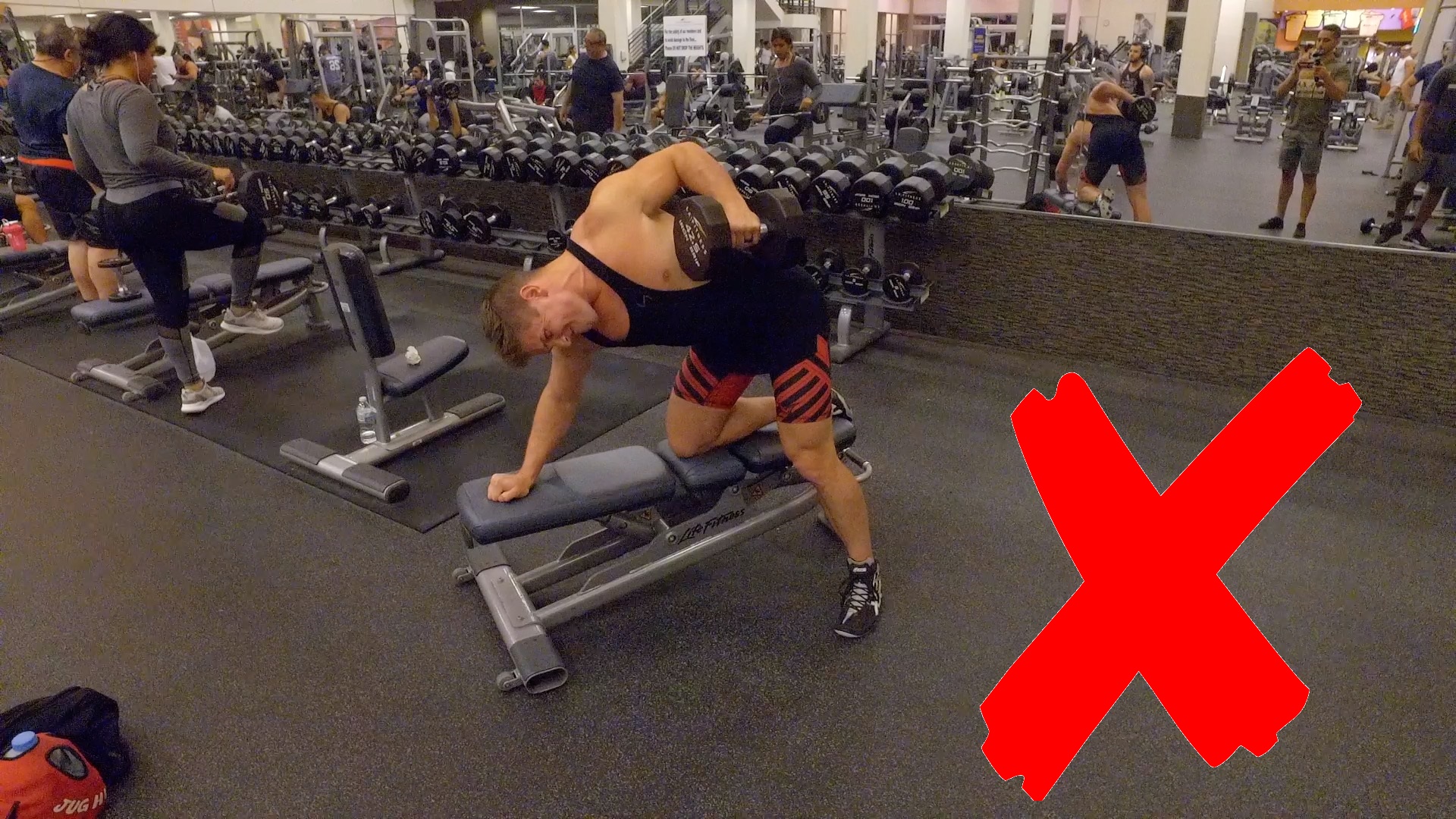
Golden Rule #3: Proper Form Is Overrated!
While it may seem that this rule contradicts rule number two, let me explain first. You can’t get caught up on perfect slow tempo form on this exercise ALL the time. It’s generally a safe movement, with minimum chance of injury, which can enable you to lift much heavier weights and shock your lats for more growth. However, slow tempo is still recommended for beginners and for those of you who may have been doing this exercise for a while, but have been doing it wrong.
It’s not so much about the bottom of the movement, though, because that’s quite easy to fix, as you just have to extend your arm fully. It’s more about the top of the movement, because until you learn how to pull the weight up without twisting your upper body, you’ll never maximize the flex, and you won’t be able to take advantage of all the benefits techniques like Cheat & Recover have to offer. Remember that cheat reps will allow you to overload to the max, but you still need to be able to do them with very little torso twist at the top of the movement.
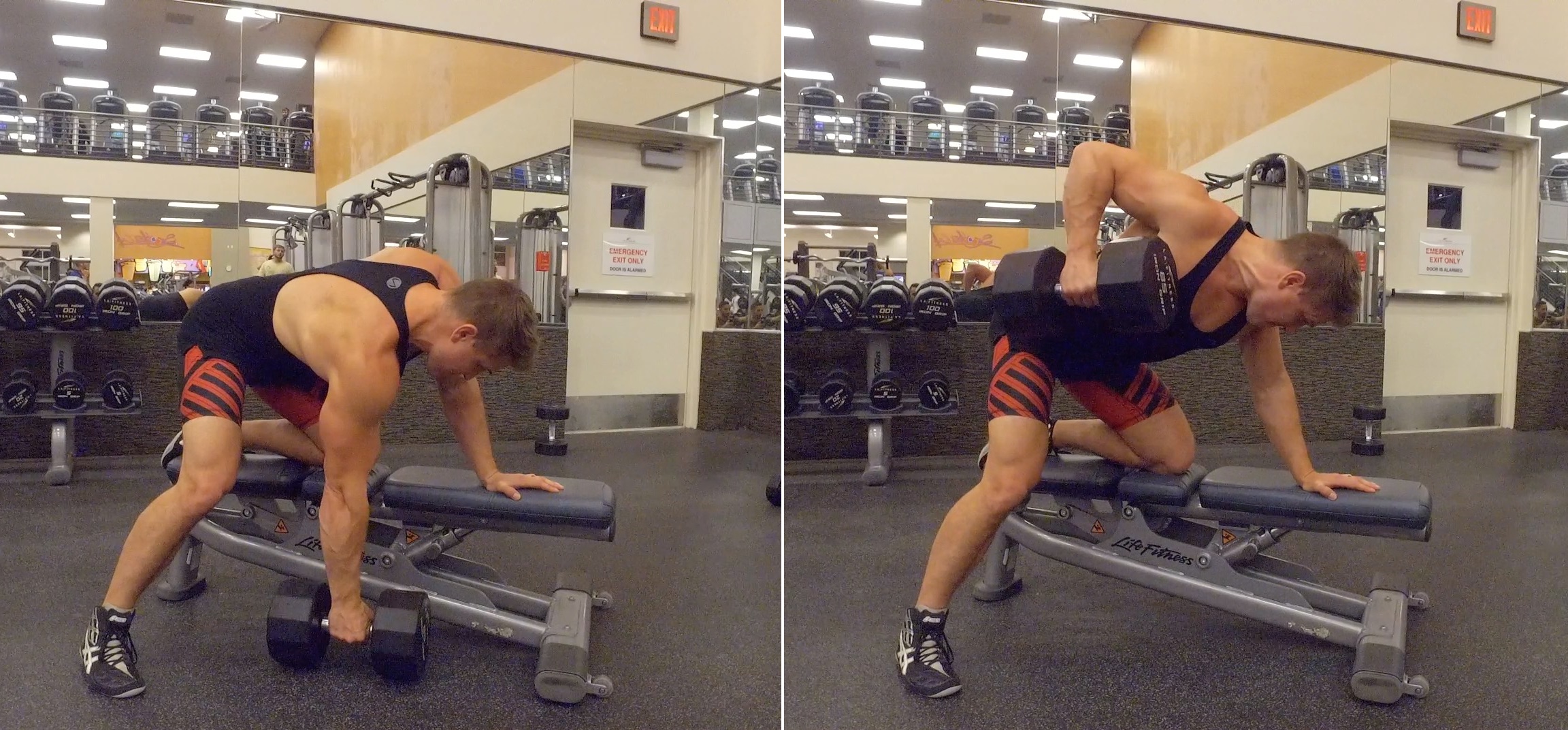
Also, while cheat reps do use momentum during the concentric portion of the rep, they are all about control during the eccentric/negative. In fact, one thing I like to do for a bit of an extra stretch at the bottom of the movement, especially with really heavy weight, is do a slight torso twist, until I feel all the fibers in my back ripping and tearing apart. Maybe give that a shot next time your train with the single-arm dumbbell row!
Bonus Tip: Use A Hook Grip Or Wrist Straps
Generally I don’t recommend a hook grip or wrist straps when training, but for this exercise you want to disengage the biceps and forearms as much as possible, so you can keep all the focus on engaging the lats. Be sure to utilize either of these techniques next time you perform this movement!
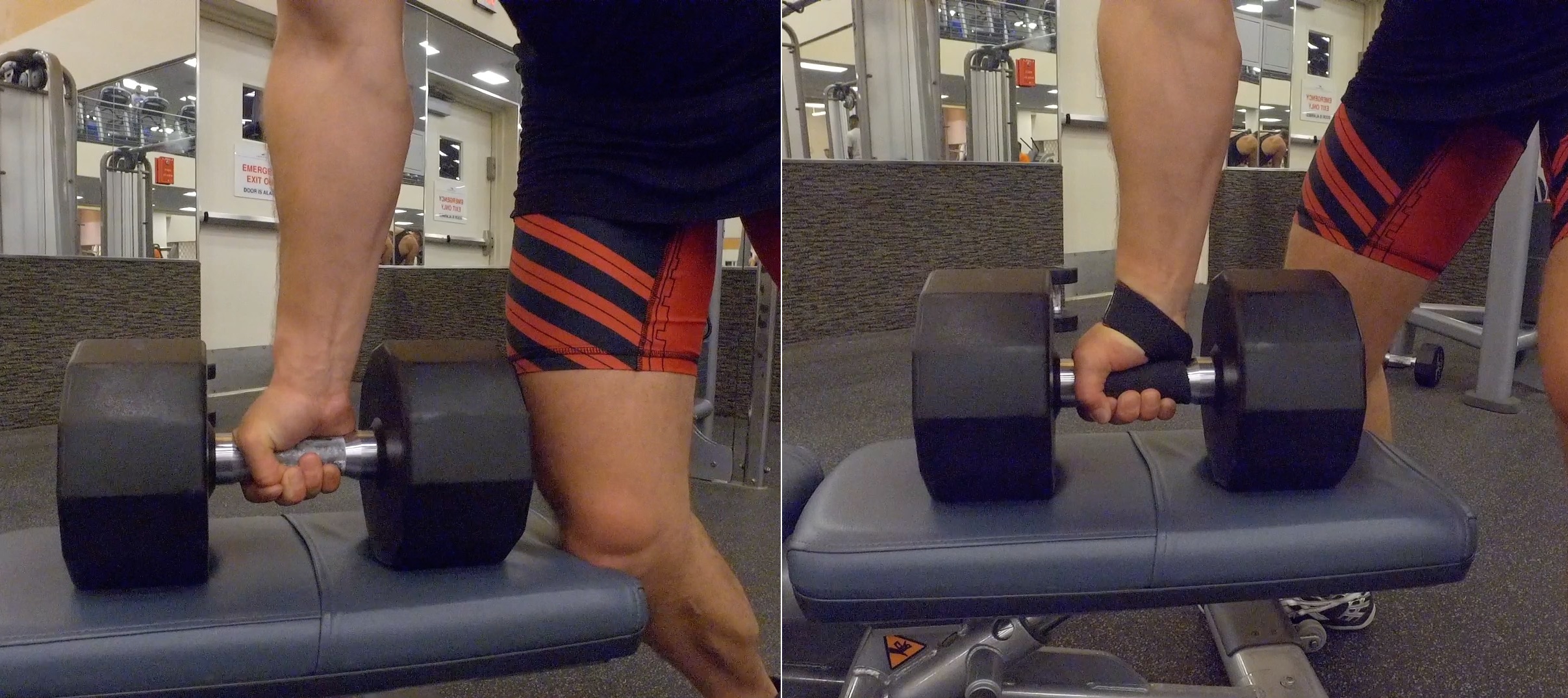
Conclusion
If you want to incorporate this movement into your next workout, I suggest doing it first on back day, or second after T-Bar rows. All you need is 6 – 8 sets of 8 – 10 reps PER ARM!








